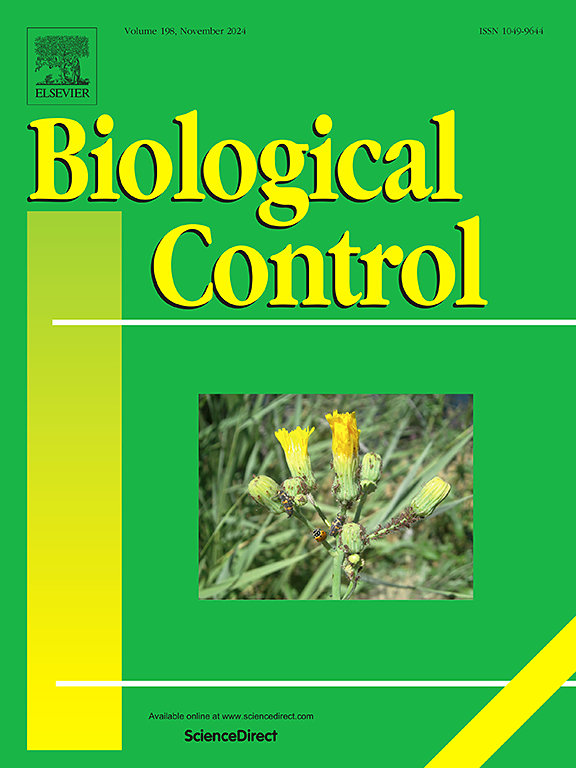一年生作物疫霉根腐病有效生物防治的meta分析
IF 3.4
2区 农林科学
Q2 BIOTECHNOLOGY & APPLIED MICROBIOLOGY
引用次数: 0
摘要
疫霉是最具破坏性的植物病原体,影响1000多种植物物种,并引起根腐病等严重疾病。传统的化学防治方法可能造成环境风险,并可能导致抗性的发展,因此必须采用生物防治生物(BCOs)等替代战略。本研究对影响BCOs防治一年生作物疫霉根腐病成功的因素进行了荟萃分析。系统的数据收集和统计分析了49项研究,包括355种BCO治疗,得出了最有效的BCO应用方法的关键见解。根和土壤处理显著优于种子处理。BCOs与病原体接种共同应用可提高疗效,可能是由于直接拮抗作用,特别是当专门的代谢物与细菌BCOs一起递送时。引人注目的是,温室和田间试验比生长室试验显示出更高的BCO效率,强调了试验环境的重要性。混合数据因子分析(FAMD)和主成分分层聚类(HCPC)确定了BCO处理的不同集群,揭示了BCO应用方法与疗效之间的明确关联。这些发现表明,需要优化施用方法和配方,以最大限度地提高BCO的稳定性和有效性,从而可能增强其在病虫害综合治理战略中的作用。本文章由计算机程序翻译,如有差异,请以英文原文为准。

Towards effective biocontrol of Phytophthora root rot in annual crops: A meta-analysis
Phytophthora comprise the most destructive plant pathogens, affecting over 1,000 plant species and causing severe diseases such as root rot. Traditional chemical control methods may pose environmental risks and can contribute to resistance development, making alternative strategies such as the implementation of biological control organisms (BCOs) essential. This study presents a meta-analysis evaluating factors that influence the success of BCOs against Phytophthora root rot in annual crops. Systematic data collection and statistical analyses of 49 studies comprising 355 BCO treatments resulted in key insights into the most effective BCO application methods. Root and soil treatments were significantly more effective than seed treatments. Co-application of BCOs with pathogen inoculation enhanced efficacy, likely due to direct antagonism, particularly when specialized metabolites were delivered alongside bacterial BCOs. Strikingly, greenhouse and field trials demonstrated higher BCO efficacy than growth chamber experiments, emphasizing the importance of trial environments. Factor Analysis of Mixed Data (FAMD) and Hierarchical Clustering on Principal Components (HCPC) identified distinct clusters of BCO treatments, revealing clear associations between BCO application methods and efficacy. These findings highlight the need for optimized application methods and formulations to maximize BCO stability and efficacy, potentially enhancing their role in integrated pest management strategies.
求助全文
通过发布文献求助,成功后即可免费获取论文全文。
去求助
来源期刊

Biological Control
生物-昆虫学
CiteScore
7.40
自引率
7.10%
发文量
220
审稿时长
63 days
期刊介绍:
Biological control is an environmentally sound and effective means of reducing or mitigating pests and pest effects through the use of natural enemies. The aim of Biological Control is to promote this science and technology through publication of original research articles and reviews of research and theory. The journal devotes a section to reports on biotechnologies dealing with the elucidation and use of genes or gene products for the enhancement of biological control agents.
The journal encompasses biological control of viral, microbial, nematode, insect, mite, weed, and vertebrate pests in agriculture, aquatic, forest, natural resource, stored product, and urban environments. Biological control of arthropod pests of human and domestic animals is also included. Ecological, molecular, and biotechnological approaches to the understanding of biological control are welcome.
 求助内容:
求助内容: 应助结果提醒方式:
应助结果提醒方式:


